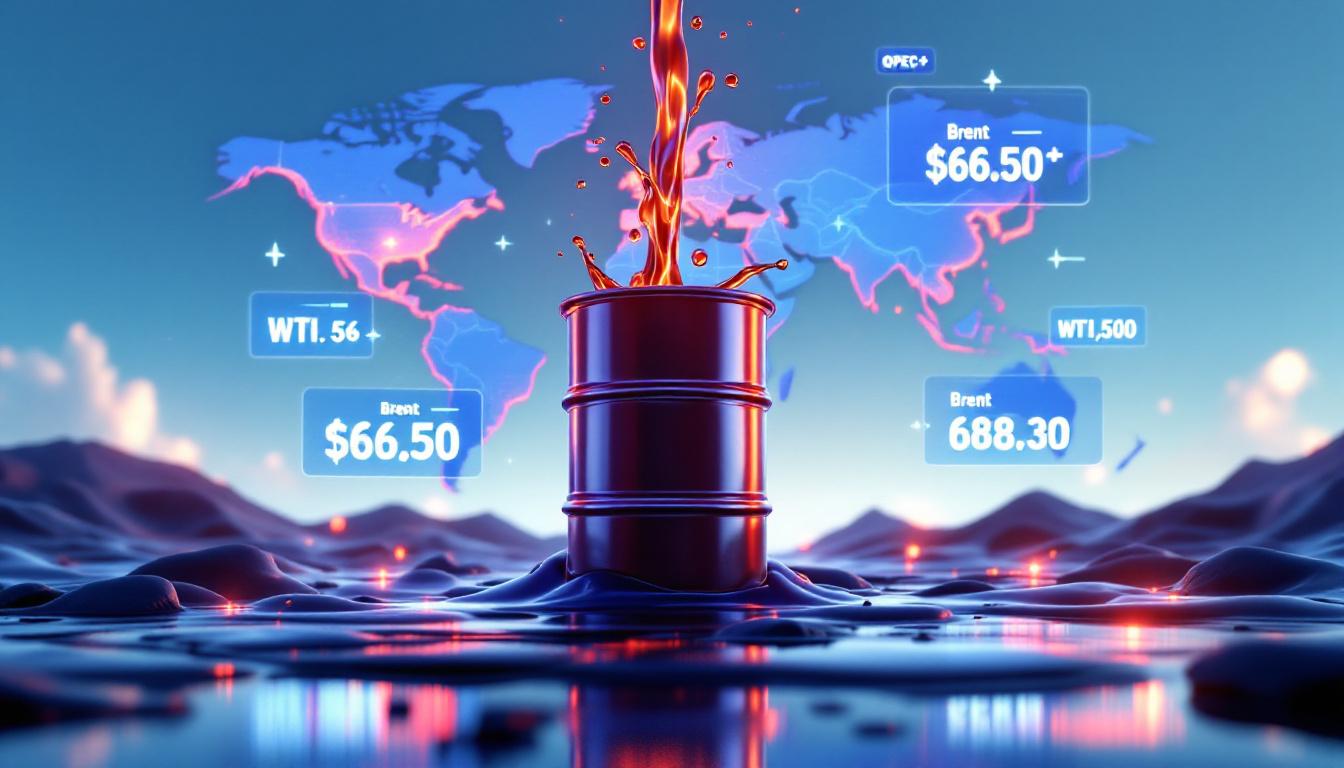How Did Copper Perform in the First Half of 2025?
Copper markets demonstrated exceptional strength throughout H1 2025, with substantial price appreciation across all major exchanges. LME copper prices surged by 12.66%, while SHFE copper increased by 8.22%, and SMM #1 copper cathode prices rose by 8.4%. This consistent upward movement across global benchmarks underscores copper's robust performance during this period.
The daily average price of SMM #1 copper cathode reached 77,657.65 yuan/mt in H1 2025, representing a 4% year-over-year increase compared to the 74,552.86 yuan/mt average in H1 2024. This upward momentum continued into early July, with prices reaching 80,535 yuan/mt on July 4, up 0.68% from June 30, indicating sustained market strength.
Inventory Dynamics Creating Market Tension
A fascinating divergence in global copper inventories emerged during H1 2025, creating significant market tension:
- LME copper inventories plummeted by 66.6%, falling dramatically from 271,350 mt to just 90,625 mt
- COMEX copper inventories surged by 126.2%, increasing from 93,372 short tons to 211,209 short tons
- Chinese domestic inventories showed high volatility, peaking at 377,000 mt in March before declining sharply to 126,100 mt by June 30
This inventory divergence, particularly the dramatic LME drawdown alongside the COMEX buildup, reflects shifting global trade flows and stockpiling behaviors in anticipation of potential tariff implementation.
Regional Price Performance Variations
While all major copper benchmarks showed strength in H1, regional variations in price performance reflected localized supply-demand dynamics:
- Asian markets (SHFE/SMM) showed steady but relatively moderate gains
- European markets (LME) demonstrated exceptional price appreciation
- North American markets displayed increased volatility with premium fluctuations
These regional variations highlight how the copper market game intensifies in H2 and macro policies influence distinct geographic factors ranging from Chinese infrastructure spending to American stockpiling activities.
What Factors Drove Copper's Bullish H1 Performance?
Supply Constraints Tightening the Market
The copper concentrate market faced severe and intensifying pressure throughout H1 2025, with supply constraints becoming increasingly apparent:
- The SMM Imported Copper Concentrate Index fell dramatically from $5.85/dmt in early January to -$44.81/dmt by late June
- This $50.66/dmt decline visually demonstrates the accelerating supply shortage
- Mid-2025 TC/RC negotiations between Antofagasta and Chinese smelters settled at $0.0/dmt and $0.0/lb, reflecting unprecedented market tightness
This zero TC/RC settlement represents a historic milestone in the copper market, as smelters effectively surrendered all processing margins to secure concentrate supplies, highlighting the extreme nature of the current shortage.
Production Paradox: Higher Output Amid Raw Material Shortages
Despite severe concentrate shortages, Chinese copper cathode production surged during H1 2025:
- The period saw a substantial 674,700 mt (11.4%) year-over-year increase in copper cathode output
- This counterintuitive growth stemmed from significant new smelting capacity commissioned in Q4 2024 and Q1 2025
- Many new facilities reached full production capacity during H1 2025, intensifying competition for limited concentrate supplies
This production paradox has created substantial strain on smelter economics, with facilities operating despite historically low treatment charges, fundamentally altering the profit distribution across the copper value chain.
Demand Resilience Supporting Prices
Several key demand factors contributed to copper's strength throughout H1 2025:
- Continued robust growth in new energy vehicle (NEV) production and sales
- Sustained investment in power grid infrastructure, particularly in China
- Overall demand resilience despite various macroeconomic uncertainties
- Strategic stockpiling ahead of potential trade policy changes
The green energy transition continues to provide structural support for copper demand, with electrification efforts requiring substantial copper inputs across multiple sectors.
Geopolitical Tensions and Trade Policy Concerns
Market anxiety intensified considerably during H1 2025 due to several geopolitical factors:
- US tariff impacts on copper proposals for significant increases on imported products
- Resulting precautionary stockpiling behavior, particularly evident in US markets
- Escalating geopolitical conflicts in the Democratic Republic of Congo (DRC)
- Supply chain security concerns elevating copper's strategic importance
These geopolitical elements introduced substantial uncertainty into the market, prompting precautionary inventory building and risk premiums in pricing.
What Are the Macroeconomic Forces Shaping Copper's H2 Outlook?
Domestic Chinese Policy Expectations
China's policy landscape is expected to evolve significantly in H2 2025, with several key developments likely to impact copper markets:
Fiscal Policy Developments
- Accelerated implementation of existing policies with timely introduction of incremental measures
- Concentrated issuance of ultra-long-term special treasury bonds and special-purpose bonds in Q3
- Potential additional ultra-long-term special treasury bonds to support:
- Large-scale equipment upgrades
- Consumer goods trade-in programs
- Implementation of major national strategies
- Security capacity building in key sectors
These fiscal initiatives should provide substantial support for infrastructure investment and manufacturing upgrades, both copper-intensive activities.
Monetary Policy Outlook
- Market widely anticipates further cuts to the Loan Prime Rate (LPR) in H2
- Additional reductions in the reserve requirement ratio (RRR) expected to improve liquidity
- Combined monetary easing aims to stimulate economic activity and support financing for key projects
The potential monetary stimulus would likely enhance credit availability for copper-intensive sectors such as real estate, manufacturing, and infrastructure.
Capital Market and Consumption Initiatives
- Deepening capital market reforms to attract medium and long-term investment
- Enhanced consumption stimulus focusing on cultural tourism, sports, and health sectors
- Optimization of tax refund policies for overseas visitors
- Fiscal support for childbirth, employment, and service consumption
While these consumption-focused initiatives may have less direct impact on copper demand than infrastructure spending, they contribute to overall economic growth prospects.
International Economic Factors
US Federal Reserve Policy Trajectory
- June's stronger-than-expected non-farm payrolls data has extended the Fed's wait-and-see period
- Markets have nearly abandoned expectations for a July interest rate cut
- Current probability of a September rate cut estimated at approximately 70%
- Impact scenarios:
- If rate cuts proceed as expected and effectively support the US economy: supportive for copper prices
- If global economic slowdown exceeds expectations: potential dampening effect on copper demand
The timing and pace of Fed rate cuts will significantly influence USD strength, global liquidity conditions, and investment flows into commodity markets including copper.
US Section 232 Tariff Implementation
The timing and rate of potential US tariffs on copper imports represent a critical variable for H2 2025:
- If a 25% tariff is implemented before September:
- Q3: Likely increase in US copper inventories while other regions see declines
- Q4: Reduced US stockpiling demand, declining US inventories, increasing inventories elsewhere
- If tariff implementation is delayed:
- Continued US imports potentially extending into Q4
- Further tightening of non-US markets
- Sustained upward pressure on copper prices
The tariff implementation schedule could significantly reshape global trade flows, creating regional pricing disparities and inventory redistributions.
How Will Supply-Demand Fundamentals Impact Copper in H2 2025?
Supply-Side Constraints and Challenges
Limited Growth in Global Concentrate Supply
- Incremental supply will remain restricted, primarily dependent on expansion of existing mines
- Few world-class new copper mine projects coming online in the near term
- Marginal contributions from new projects insufficient to alleviate supply pressures
- Growing scarcity of large-scale developable copper deposits globally
The copper mining sector faces structural challenges beyond cyclical factors, with declining ore grades and increasing technical complexity in new projects limiting supply growth.
Copper Cathode Supply Imbalances
- Current geographic mismatch in copper cathode distribution has created regional market distortions
- US over-imported copper cathode in H1, creating unsustainable regional imbalances
- Low inventory levels in non-US regions heighten vulnerability to supply disruptions
- Potential scenarios:
- If imbalance persists: continued support for copper prices
- If resolved (possibly due to tariff implementation): limited upside for prices
This geographic mismatch highlights how trade policy and precautionary inventory building can significantly distort traditional supply-demand fundamentals.
Demand-Side Outlook and Pressures
Mixed Signals for H2 Copper Demand
- Power grid demand expected to remain robust, particularly in China
- Potential pressure on home appliance exports due to tariff concerns
- Impact of "anti-cut-throat competition" policies may limit certain manufacturing sectors
- Global copper supply outlook projected to be lower than previous year's forecasts
- Possibility of marginally weaker demand in H2, potentially constraining copper price growth
The demand outlook features conflicting signals, with infrastructure strength potentially offset by manufacturing sector pressures.
Inventory Dynamics and Market Implications
- Current low inventory levels in both domestic Chinese markets and LME warehouses
- Historically low LME inventories creating vulnerability to market squeezes
- Supportive environment for copper prices from an inventory perspective
- Potential for inventory situation to evolve with changes in US tariff policies and global supply-demand adjustments
Low inventory coverage ratios increase market vulnerability to unexpected supply disruptions or demand surges, creating conditions for potential price volatility.
What Are Leading Institutions Forecasting for Copper Prices?
UBS: Upward Revision of Price Forecasts
UBS has significantly upgraded its copper outlook:
- Raised copper price forecasts for 2025 and 2026 by 7% and 4% respectively
- New targets: $4.24 per pound (2025) and $4.68 per pound (2026)
- Reversal of previously cautious demand outlook
- Assessment that tariff uncertainty impacts have largely dissipated
- Expectation that demand will return to trend levels within 12 months
- Support factors identified:
- Recovery in traditional end-use markets (Europe and US)
- Long-term drivers including restocking, electrification, German fiscal policy, defense, and AI industries
UBS's analysis suggests the market will increasingly focus on structural supply limitations rather than cyclical demand concerns.
Goldman Sachs: Near-Term Optimism
Goldman Sachs maintains a bullish outlook with specific price targets:
- Forecasts upside risk for LME copper prices in August 2025
- Target price: $10,050/mt
- Raised H2 2025 average price forecast to $9,890/mt (from previous $9,140/mt)
- Projects year-end 2025 prices at $9,700/mt
- 2026 outlook: $10,000/mt annual average, reaching $10,350/mt by December 2026
Goldman's forecast reflects confidence in both near-term market tightness and longer-term structural deficits.
Commerzbank: Conservative Year-End Target
- Expects copper prices to reach $9,500/mt by end of 2025
- Represents a more conservative outlook compared to other institutions
- Still implies significant upside from early 2025 levels
Commerzbank's relatively conservative forecast suggests some institutional caution regarding the sustainability of current price momentum.
CITIC Securities: Structural Support with Upside Potential
CITIC Securities emphasizes fundamental market tightness:
- Notes recent upward price fluctuations amid diverging market views
- Highlights extremely limited production guidance and CAPEX expansion for upstream refined copper mines
- Observes sharply dropping TC/RC fees as evidence of concentrate scarcity
- Maintains global refined copper market remains in tight balance
- Cites China's "steady growth" and US "soft landing" as price floor supports
- Forecasts copper price predictions to rise to $10,000-$11,000/mt in H2 2025
- Expresses caution regarding potential disruptions from "reciprocal tariff" issues in July
CITIC's analysis emphasizes structural market tightness while acknowledging trade policy risks.
Institutional Consensus and Divergence
While forecasts vary in specific targets, institutional analysts broadly agree on:
- Structural supply constraints supporting prices
- Trade policy (particularly US tariffs) as a key variable
- Limited new mine supply on the horizon
- Energy transition demand providing long-term support
Areas of divergence include:
- Demand resilience in the face of economic headwinds
- Magnitude of potential price appreciation
- Timeline for market rebalancing
What Are the Key Factors to Watch in H2 2025?
Critical Market Indicators
- Implementation timeline and details of US Section 232 tariffs
- Chinese fiscal stimulus deployment, particularly infrastructure investments
- Federal Reserve interest rate decisions and monetary policy communications
- Development of new copper mining projects and production guidance updates
- Evolution of TC/RC fees as an indicator of concentrate market tightness
- Inventory flows between major global exchanges and regions
These indicators provide real-time insights into the evolving supply-demand balance and should be monitored closely for potential market shifts.
Potential Market Disruptors
- Escalation of geopolitical tensions in key copper-producing regions
- Unexpected shifts in Chinese economic growth trajectory
- Trade policy retaliation or escalation beyond current expectations
- Significant changes in energy costs affecting smelter economics
- Labor disruptions at major mining operations
These potential disruptors could trigger substantial market volatility and require contingency planning by market participants.
Seasonal Factors and Cyclical Patterns
- Traditional seasonal demand patterns in construction and manufacturing
- Weather-related disruptions to mining operations
- Maintenance schedules at major smelters and refineries
- End-of-year inventory adjustments and positioning
While structural factors dominate the current market narrative, seasonal patterns may still influence short-term price movements and should not be overlooked.
Technical Price Levels and Market Psychology
- Key psychological price thresholds ($10,000/mt, $5.00/lb)
- Historical price resistance and support levels
- Momentum indicators and trading patterns
- Speculative positioning in futures markets
Technical factors and market sentiment can significantly influence short-term price movements, particularly during periods of uncertainty.
What's the Bottom Line for Copper in H2 2025?
Balancing Forces in the Copper Market
The copper market game intensifies in H2 and macro policies face a complex interplay of supportive and challenging factors:
- Supportive elements: Supply constraints, low inventories, infrastructure investments, and green energy transition demand
- Challenging elements: Potential demand softening, tariff uncertainties, and macroeconomic headwinds
This balance suggests continued price strength but with increased volatility as various factors exert conflicting influences.
Strategic Market Positioning
Market participants should consider several key strategic factors:
- The likelihood of continued price volatility amid policy uncertainties
- Regional price divergences due to tariff impacts and inventory imbalances
- The structural support provided by persistent concentrate shortages
- Potential for price spikes due to historically low LME inventories
Flexible positioning with contingency plans for various policy outcomes appears prudent given the current market uncertainties.
Long-Term Structural Outlook
Beyond immediate market dynamics, copper faces several long-term structural trends:
- Growing supply deficits as demand from energy transition accelerates
- Limited pipeline of major new mining projects
- Increasing production costs and declining ore grades
- Rising strategic importance in national industrial policies
These structural factors suggest sustained long-term support for copper prices beyond cyclical fluctuations.
Risk Management Considerations
The current market environment presents several specific risks requiring management:
- Heightened price volatility requiring robust hedging strategies
- Geographic price divergences creating basis risk
- Potential trade flow disruptions affecting physical delivery
- Regulatory compliance challenges amid changing trade policies
Comprehensive copper investment strategies are essential given the multifaceted uncertainties in the current market.
FAQs About the Copper Market Outlook
How might US tariffs impact global copper flows?
If implemented, US tariffs could significantly redirect trade flows, potentially creating regional premiums and discounts. Chinese exports might be redirected to Europe and other markets, while US consumers could face higher prices and potential supply constraints. The tariff implementation timeline will be crucial in determining the magnitude and duration of these impacts.
What impact will China's fiscal policies have on copper demand?
China's infrastructure spending, particularly in power grids and renewable energy, will remain a key demand driver. The scale and timing of fiscal stimulus deployment in H2 will significantly influence copper consumption patterns. Recent policy announcements suggest concentrated bond issuance in Q3, which could provide timely support for copper-intensive projects.
How severe is the copper concentrate shortage?
The dramatic decline in TC/RC rates to $0/dmt reflects an extremely tight market – a historically unprecedented situation. With limited new mine supply coming online and continued growth in smelting capacity, this t
Want to Stay Ahead of Major Mineral Discoveries?
Discovery Alert's proprietary Discovery IQ model provides real-time notifications on significant ASX mineral discoveries, including copper opportunities, turning complex data into actionable investment insights. Visit the Discovery Alert discoveries page to understand how major mineral finds can generate substantial returns for early investors.




